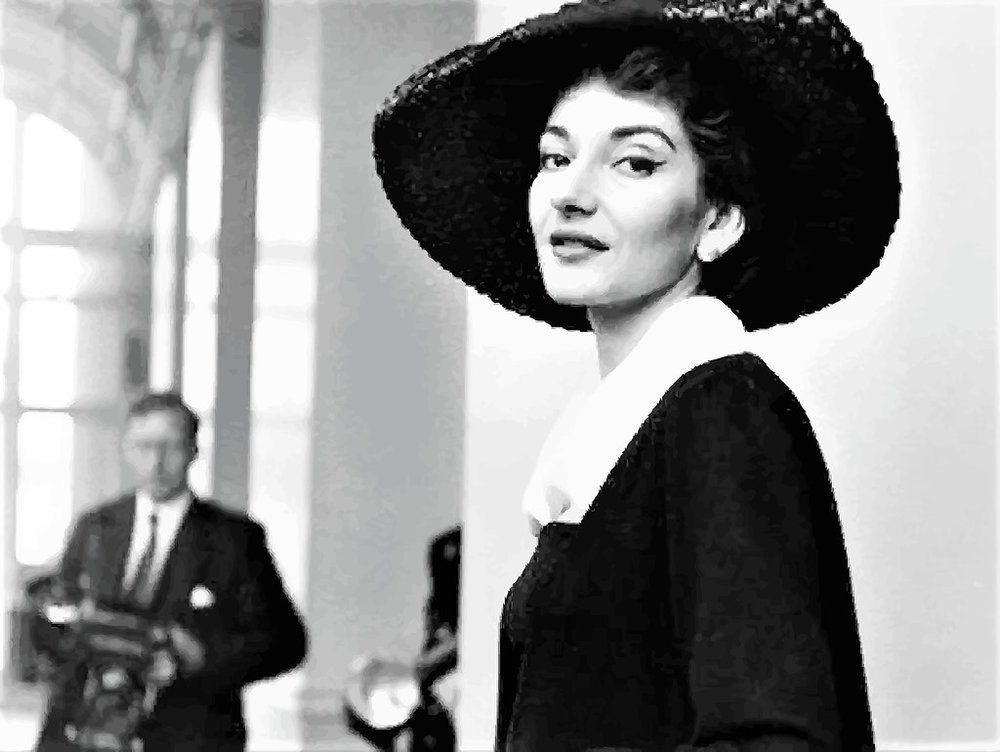As the curtains rise to unveil the centennial celebration of Maria Callas’s birth, we peer into the storied auditorium of history to revisit the life of a woman whose voice transcended the ephemeral to etch itself into the annals of the 20th century. Born on December 2, 1923, Maria Callas, née Maria Anna Cecilia Sofia Kalogeropoulos, embarked on a journey to redefine opera’s emotional and technical realms. Her voice, a confluence of celestial purity and earthly passion, carved a niche in classical music that remains untouched, echoing the moniker ‘La Divina’ – the Divine One.
A hundred years after she entered into a world that her presence would forever alter, Callas’s legacy endures not just in recordings that capture her expansive vocal range and revolutionary bel canto technique but in the indelible influence she stamped on the art form itself. An American-born Greek soprano, Callas’s artistic contributions were as much a product of her vocal prowess as they were of her unyielding dedication and the dramatic life that unfolded both on and off the stage.
This centennial is not merely a remembrance but a reawakening of the Callas phenomenon – a celebration of an artist who brought operatic characters to vivid life, not solely through her voice, but through the sheer force of her personality and stage presence. It is a tribute to a legend whose tales of triumph and tribulation resonate as powerfully today as the performances that once captivated audiences around the globe. As we commemorate a century since her birth, we reflect on Maria Callas’s monumental impact on opera, an art form she both loved fiercely and transformed irrevocably.
And She Would Be Called Maria Callas
Traversing back to the genesis of Maria Callas’s saga, we uncover the tapestry of a complex upbringing that shaped the temperament and talent of opera’s fiercest luminary. Born in the bustling landscape of 1920s New York to Greek immigrant parents, Callas’s life was a symphony composed of contrasts from its inception. Her birth certificate may have read “Sophie Cecilia Kalos.” Still, the world would know her as Maria, a name she took on along with a destiny that would surpass her family’s aspirations.
Her mother, Litsa, was a formidable figure, with ambitions thwarted by her circumstances and a determination to manifest her dreams through her daughter. This dynamic instilled in young Callas a profound resolve and perhaps a foretaste of the dramatic flair she would later channel into her artistry. The untimely death of her brother Vassilis, coupled with the discordant marriage of her parents, composed the early overtures of tragedy and resilience that would underscore her life’s narrative.
Callas’s early exposure to music was less a gentle introduction and more a demanding immersion, with her mother ensuring that her musical education began in earnest. The family’s return to Greece when Maria was 13 provided the stage for her formal training at the prestigious Athens Conservatoire. Here, under the tutelage of esteemed instructors, the raw material of her voice began to be sculpted into something extraordinary.
Despite the shadows cast by World War II and the personal challenges of poverty and near-blindness due to her near-sightedness, Callas’s ascent was unstoppable. Her debut in Athens set the tone for a career defined by meteoric rises and precipitous falls. Even in these formative years, there was a sense of inevitability about Callas – a prelude to the divinity that would later be ascribed to her persona and performances.
This crucible of early life, marked by fervent ambition and familial tumult, was not simply a backdrop for Callas’s emergence but the anvil upon which her character and career were forged. It was here, amidst the strains of adversity and the echoes of operatic arias, that the legend of Maria Callas began to take shape, note by poignant note.
Maria Callas – The Craft of Her Skills
As the soil of her native Greece embraced her return, young Maria Callas found herself within the hallowed halls of the Athens Conservatoire. This institution would nurture her nascent talent into a formidable force. Under the rigorous tutelage of the esteemed Elvira de Hidalgo, a soprano of considerable repute, Callas honed her voice with the discipline of a craftswoman chiselling marble into form. It was a transformative period, where the technical prowess that would become her hallmark was meticulously developed through countless hours of vocal drills and study.
Callas’s education was more than scales and arpeggios; it was an immersion into the soul of opera. Initially weighted with German arias, her repertoire soon expanded to the challenging bel canto roles that would become synonymous with her name. The Conservatoire’s stern environment, coupled with the tumult of war, fostered her musicality and an indomitable spirit that would serve her well in the competitive opera scene.
The crucible of World War II could not stifle the burgeoning voice of Callas. Her professional debut came at age 15, with a performance that hinted at the brilliance to come. It wasn’t long before she stepped onto the stage of the Royal Opera of Athens, taking on the role of Tosca, a character that would remain a touchstone throughout her career. This performance was a revelation, not just for the audience, but for Callas, affirming her destiny in the arts.
Recognition came swiftly as Callas’s voice—lustrous, agile, and haunting—began to draw attention beyond the local stages. She was awarded the first prize in a significant singing competition, leading to further engagements and the beginnings of a repertoire that would challenge and change the very fabric of opera. These early echoes of acclaim were but a prelude to the crescendo of global adulation that would follow as Callas—the student, the artist, the phenomenon—stepped into the limelight that seemed preordained to be hers.
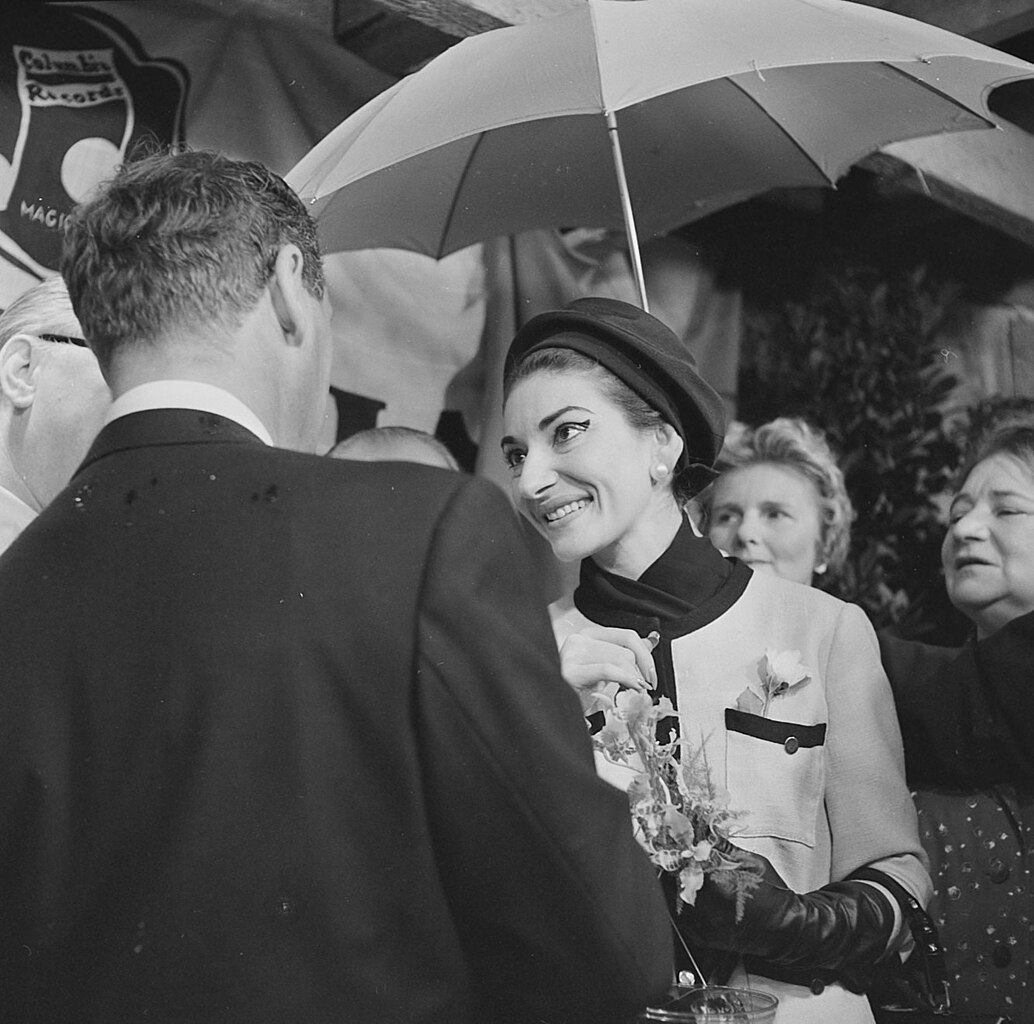

Maria Callas and Her Rise To Fame
Maria Callas’s ascension to the zenith of operatic acclaim was as meteoric as it was mesmerizing. Post-war Europe became the canvas upon which she painted her legendary career, beginning with her Italian debut in Verona in 1947. Her performance as Gioconda marked the commencement of an era—the Callas Era—in opera. Her voice, with its distinctive timbre and emotional intensity, captivated audiences and critics alike.
The defining moment of Callas’s rise came with her portrayal of Norma, Bellini’s Druid priestess, at La Scala in 1952. This role was made for Callas, demanding a synthesis of immaculate vocal technique and profound acting. Her ability to precisely navigate the complex coloratura passages and convey the depth of Norma’s anguish established her as a singer and a tragedienne on the stage. The “Callas effect” had begun—her artistry redefining bel canto and bringing a new era of realism to opera.
Each role Callas adopted became a study in dramatic interpretation: from the vulnerability of Violetta in “La Traviata” to the fiery defiance of Medea. Her vocal versatility was unparalleled, navigating the heights of the soprano range with ease and dipping into the mezzo register with power and clarity. The “Callas sound” was a phenomenon—an intricate alloy of vocal strength, agility, and emotional resonance that could convey a narrative in a single note.
Her fame was not merely confined to the opera house. Recordings of her performances flew off the shelves, making her one of the best-selling classical artists, her voice becoming the soundtrack to a generation’s experience of opera. As her renown grew, so did her influence, forever altering the course of operatic performance and becoming the standard by which all others would be measured. The divine Callas had not only risen to fame; she had transformed it into a testament to her artistry.
Maria Callas Artistic Achievements and Vocal Technique
Maria Callas’s artistic achievements and vocal technique are the stuff of legend, a blend of meticulous craft and impassioned artistry that set her apart as an outstanding soprano. Her mastery of the bel canto technique—a style characterized by beautiful singing emphasising purity of tone and virtuosic vocal embellishments—was unparalleled. Callas revived this traditional form, infusing it with a dramatic potency that had seldom been seen before.
Bel canto requires exceptional control of vocal dynamics and agility in ornamentation, which Callas delivered efficiently. Her voice was a prismatic entity, capable of dazzling coloratura runs and trills, yet equally potent in its piercing fortissimo or haunting pianissimo. The control she wielded over her voice was as precise as a sculptor with a chisel to marble, allowing her to express a broad palette of emotions within a single phrase.
“Bel canto requires exceptional control of vocal dynamics and agility in ornamentation, which Callas delivered efficiently. Her voice was a prismatic entity, capable of dazzling coloratura runs and trills, yet equally potent in its piercing fortissimo or haunting pianissimo”.
LuxuryActivist.com
Her voice was notable for its three distinct registers: a rich, warm lower register, a complete and dramatic middle range, and a high register that, while not the most effortless, was wielded with such artistry that it left a lasting impression. It was not just the range but the colour and texture of her voice that made her stand out. She could produce a voice at once voluminous yet capable of the most delicate subtleties, allowing her to navigate the demanding roles that became her signature.
Callas’s approach to roles was methodical; she studied the score intensely, understanding her part and the entire musical and dramatic context. Her most iconic roles—such as Norma, Lucia di Lammermoor, and Medea—were marked by her ability to inhabit the characters fully. Norma conveyed both the power and the pathos of the betrayed priestess, her voice scaling the heights of vengeance before softening into the vulnerability of a woman’s grief. Lucia’s portrayal of the descent into madness during the opera’s infamous mad scene was a tour de force of vocal control and dramatic interpretation.
Beyond the technical, Callas brought an emotional intelligence to her revelatory singing. She connected with the heart of the music, transforming arias into gripping narratives. Her performances were not just heard; they were felt. This ability to elicit profound emotional responses from audiences made Maria Callas an outstanding soprano, her voice not merely an instrument but a conduit of raw emotion and dramatic storytelling.
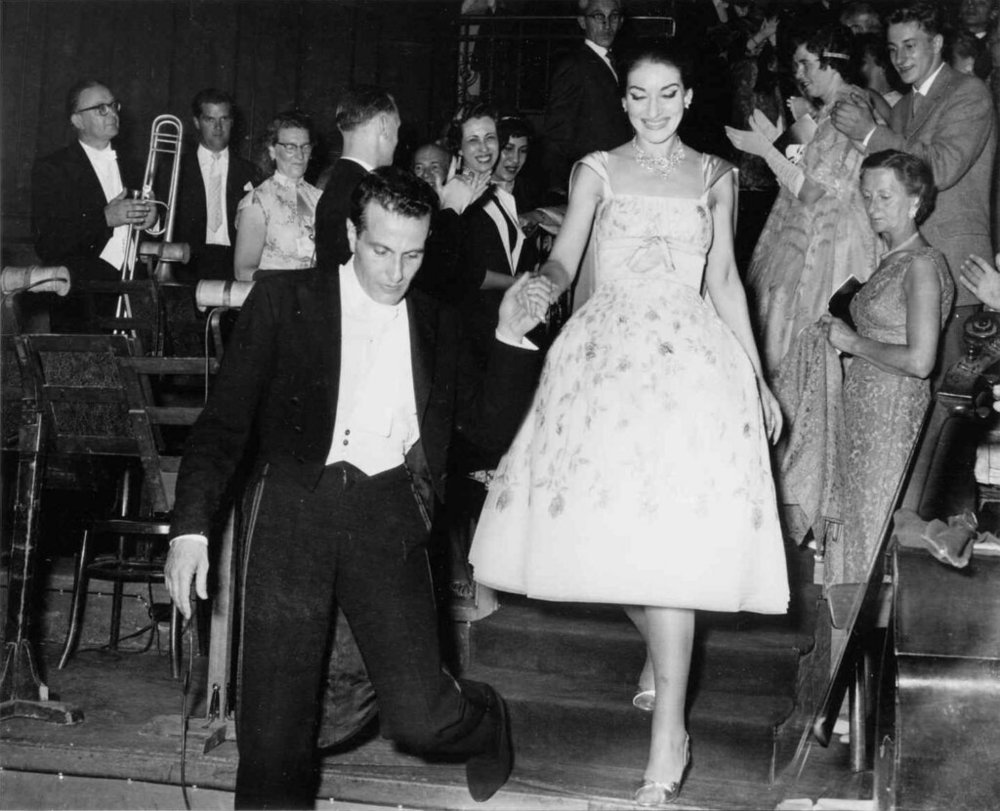

A burning passion that was sometimes a weight to bear.
The narrative of Maria Callas’s life is punctuated by a series of personal and professional challenges that interlaced her path to stardom with tribulations. Her struggle with near-sightedness was a profound handicap for a performer; it left her nearly blind on stage, navigating the realms of grand opera through memory and spatial awareness rather than sight. This physical challenge, however, did not impede her dramatic expressions, which remained as vivid and compelling as her voice.
Perhaps the most publicized personal struggle was Callas’s dramatic weight loss. Initially, her fuller figure was typical of the operatic sopranos of the time. However, in the mid-1950s, Callas shed nearly 80 pounds, a transformation that coincided with her vocal timbre and technique shift. While the weight loss contributed to her striking stage presence and fashion icon status, it also coincided with a noticeable change in her vocal instrument—some critics posited a loss of warmth and volume in her voice, potentially marking the beginning of vocal decline.
The media were relentless in their coverage of Callas’s life, and none more so than in the case of her professional rivalry with Italian soprano Renata Tebaldi. This rivalry was as much a media creation as it reflected the natural competitive spirit between two leading opera ladies. Callas was often portrayed as the fiery, dramatic soprano, while Tebaldi was seen as the lyrical voice of warmth and sunshine. Whether genuine animosity existed, the rivalry narrative heightened the allure surrounding both singers, even as it detracted from their artistic achievements.
Moreover, Callas’s personal life was fodder for scandal, most notably her tumultuous affair with the Greek shipping magnate Aristotle Onassis. Their relationship was a saga of passion and heartbreak that played out in the glare of the public eye, further intensifying the scrutiny and pressure she faced.
Despite these challenges, or perhaps because of them, Callas’s artistry never waned. She harnessed her trials and the controversies that swirled around her, channelling them into performances of searing intensity and emotional depth. Much like the operas she performed, her life was a tapestry of dramatic highs and lows, a testament to her strength as an artist and resilience as a woman.
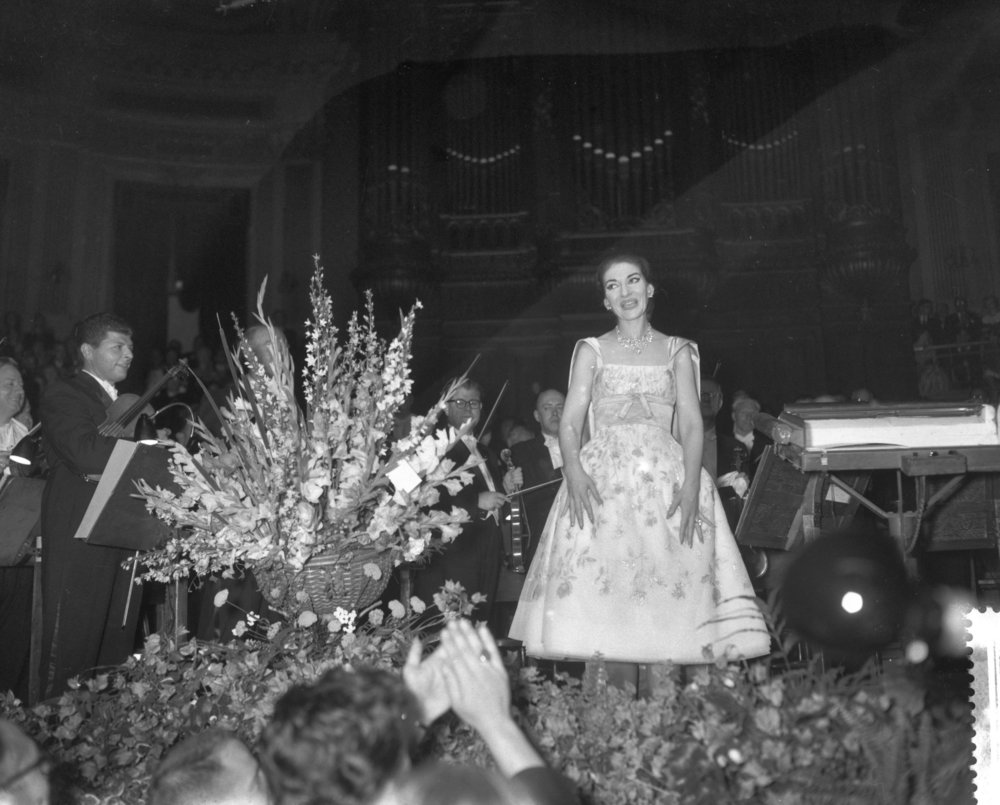

Her Legacy as a Love Story with Opera
The legacy of Maria Callas resonates with undiminished clarity through the annals of operatic history. Her contributions to the art form are profound and manifold, ushering in a new epoch where dramatic expression and vocal excellence became inextricably linked. Callas’s interpretative depth redefined the roles she undertook, rendering them with an emotional authenticity that became the benchmark for future generations of sopranos. Her insistence on the importance of dramatic and musical preparation for operatic roles revolutionized how performers approached their craft.
Callas’s influence extended beyond the stage. She was instrumental in reviving interest in the bel canto repertoire of the early 19th century, works which had fallen out of favour and were seldom performed before she championed them. Her performances and recordings of these pieces restored them to the canon, where they remain. Her masterclasses at Juilliard demonstrated her dedication to mentoring the next generation, ensuring her artistry and approach to music endure beyond her performances.
The impact of Callas’s art was summarized poignantly by Leonard Bernstein who called her “the Bible of opera.” This remarkable accolade from one of the 20th century’s most influential conductors and composers underscores the reverence with which her peers regarded her. Her musical peers saw in her not just a voice but a force that reshaped opera itself.
Today, Callas is still considered the epitome of the operatic diva, and her recordings continue to be best-sellers, inspiring both awe and devotion in those who hear them. Her story, embroiled with triumph and tragedy, her voice, imbued with a divine fire, and her unyielding dedication to the art form ensure that Maria Callas’s legacy will continue to be celebrated, studied, and aspired to as long as the art of opera endures.
Her Personal Life: the Greek story
Maria Callas, whose life offstage rivalled the drama of her operatic roles, found her narrative deeply entwined with Aristotle Onassis. Their connection was instant and incendiary when they met in 1957, sparking a liaison that would captivate the world’s attention. Before Onassis, Callas had wed industrialist Giovanni Battista Meneghini, who managed her burgeoning career. This relationship, however, was overshadowed by her intense bond with Onassis.
Callas and Onassis shared a complex relationship, marked by profound passion and the high-stakes world of celebrity and power. His subsequent marriage to Jacqueline Kennedy was a public blow to Callas, yet she remained inextricably linked to him until his death. The opera diva’s saga, with its highs and lows, was a poignant counterpoint to her public persona, revealing a vulnerability that her audience seldom saw on stage. Her life, steeped in love, loss, and the relentless pursuit of artistic perfection, was as captivating as any aria she ever performed.
Maria Callas and Her Late Life
Maria Callas’s twilight years were a poignant coda to a life lived with the intensity of a tragic opera. Her professional engagements dwindled in the late 1960s as her voice began to show signs of strain, leading to fewer performances and eventual retirement from the stage. The divine spark of her voice, once the clarion call of operatic brilliance, had dimmed, leading her to seek solace away from the limelight.
Despite the decline of her singing career, Callas did not vanish from the public eye. She channelled her passion for music into nurturing the next generation of opera singers through a series of masterclasses at the Juilliard School in New York. These sessions were a testament to her enduring commitment to the art form and offered a glimpse into her vast knowledge and experience.
The later years of Callas’s life were marked by a profound solitude, exacerbated by the loss of Onassis in 1975. She lived quietly in Paris, her days far from the glamorous and tumultuous life she had once led. Yet even in seclusion, the allure of her former glory remained undiminished, with her recordings continuing to captivate and her legend inspiring new admirers.
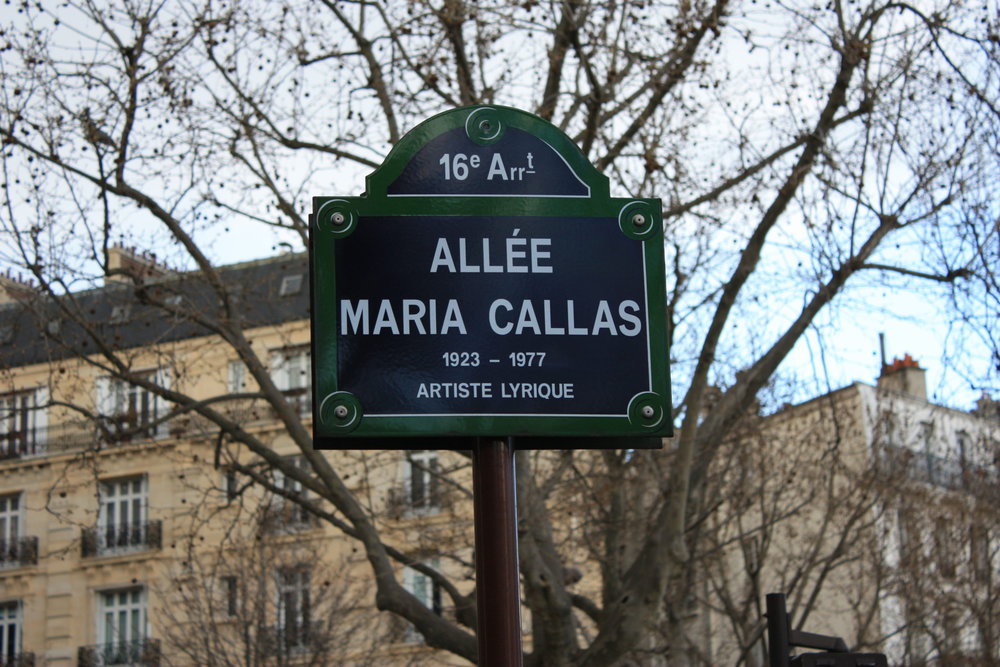

Callas passed away on September 16, 1977, at the age of 53, from a heart attack at her Paris apartment. The news of her death sent waves of mourning through music and beyond. Her funeral was attended by legions of fans and figures from the highest echelons of society, a fitting homage to a woman who had been both a titan of opera and a fixture in the tapestry of high culture.
In death, as in life, Maria Callas left an indelible imprint on the world. The end of her career did not signify the fading of her influence; instead, it marked the solidification of her status as an icon. Her recordings continue to be cherished, her performances studied and emulated, and her life story told and retold. The essence of her artistry—a relentless pursuit of emotional truth and technical mastery—remains a beacon for all who follow in her footsteps. Maria Callas, La Divina, lives on in the annals of music history, her voice a haunting echo of an era she helped define.
To conclude,
Maria Callas’s journey from the daughter of Greek immigrants to the zenith of operatic grandeur is a narrative etched in the annals of cultural history. Her life, echoing the dramatic contours of the roles she inhabited, remains a testament to the transformative power of artistry. Her voice, once heard, became a measure for all sopranos, a pinnacle of bel canto technique fused with incandescent drama. Callas’s influence endures in the reverence of her recordings and the aspirational paths of contemporary sopranos like Anna Netrebko, Sonya Yoncheva and Sondra Radvanovsky, who embody the marriage of vocal excellence and emotive potency that Callas personified.
As we commemorate the centenary of her birth, we are reminded that Callas was not just a singer; she was an era, an experience, an emotion. Her legacy is not confined to the past; it resonates in the present and guides the future. The stages of the world’s great opera houses still whisper her name, and the roles she immortalized continue to challenge and inspire. In every aspiring soprano’s voice, we hear an echo of Callas’s commitment to perfection and in every standing ovation, the applause that once thundered for La Divina.
To remember Maria Callas is to remember opera not as a mere performance but as the pulse of life itself. Her enduring impact lies in the hearts she touched and the art form she elevated. As the curtain falls on this centennial remembrance, we are left with the resounding call of an immortal voice that sang not just to the audiences of her time but to the very soul of opera itself.
José Amorim
Information sourced by the author for luxuryactivist.com. All content is copyrighted with no reproduction rights available. Images are for illustration purposes only.
This story originally appeared on Luxuryactivist

